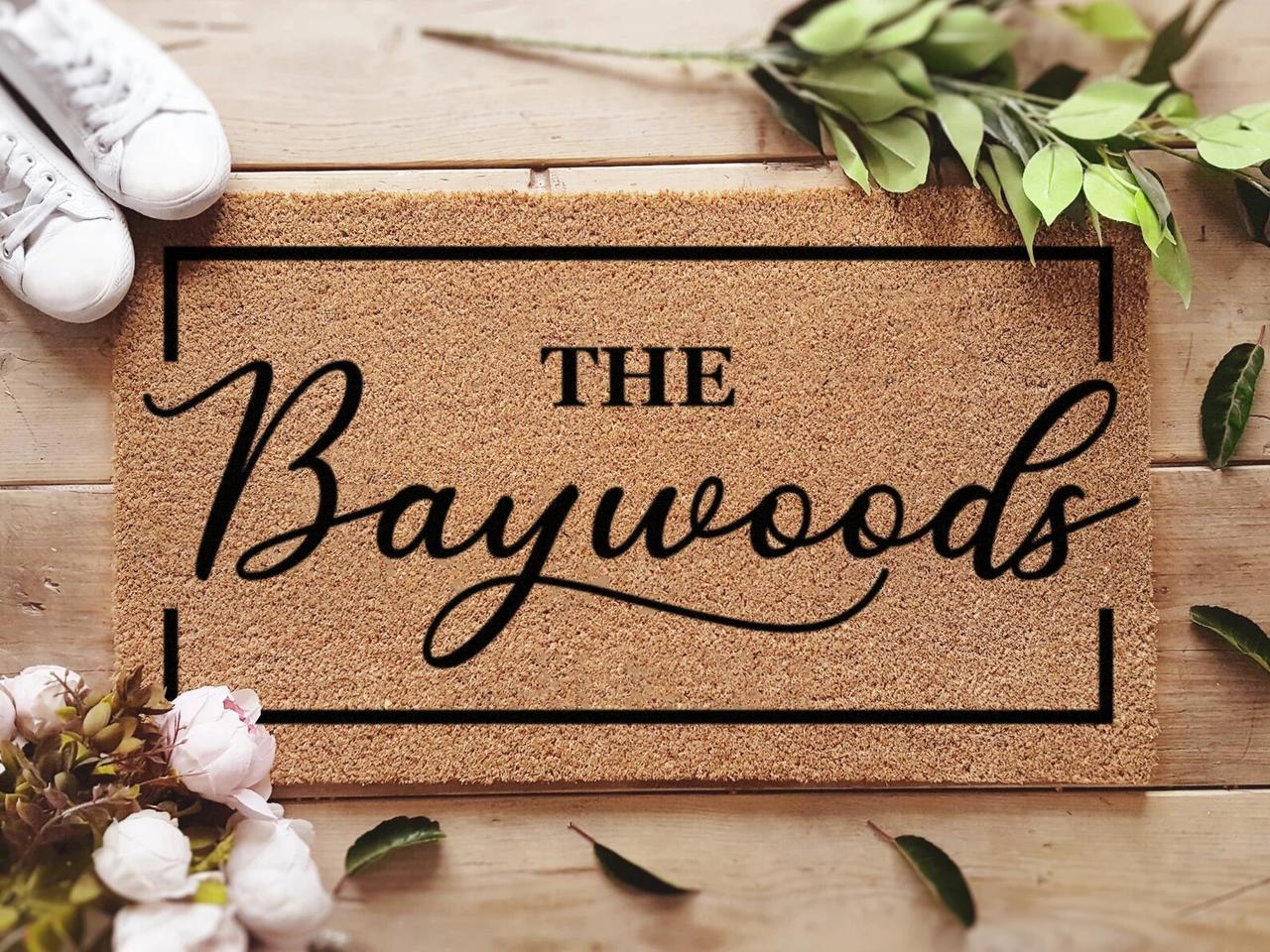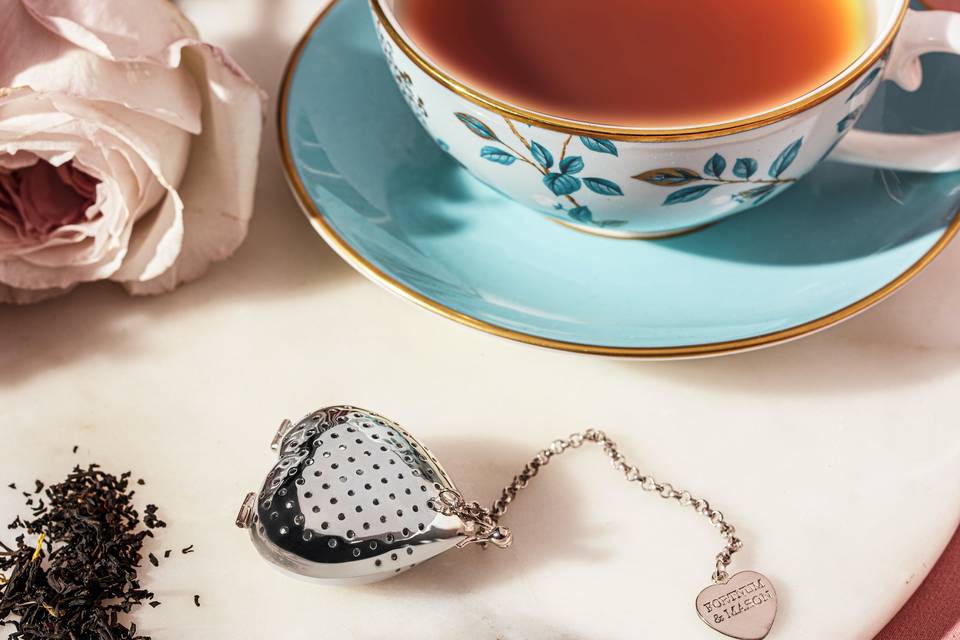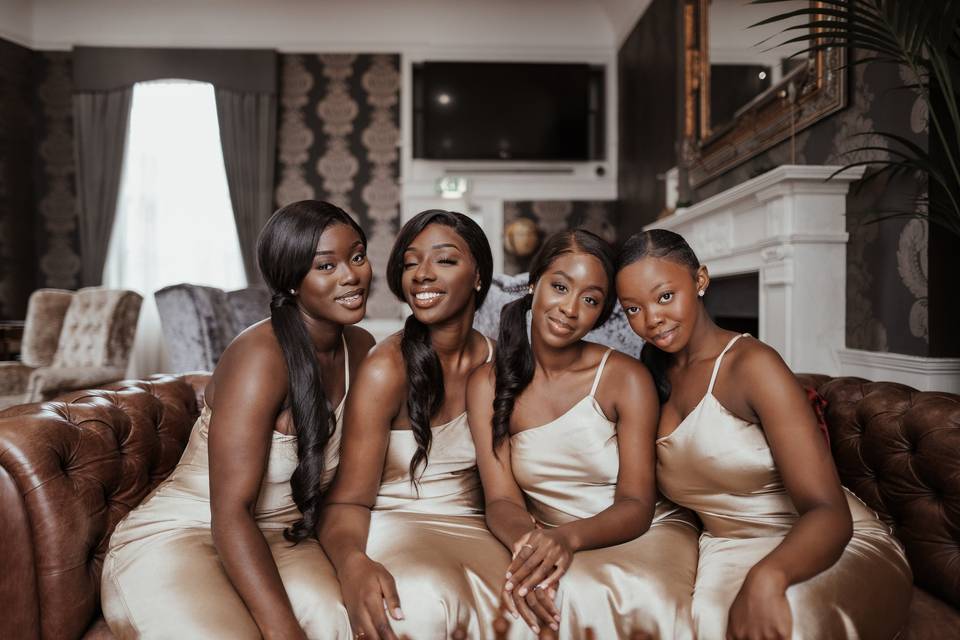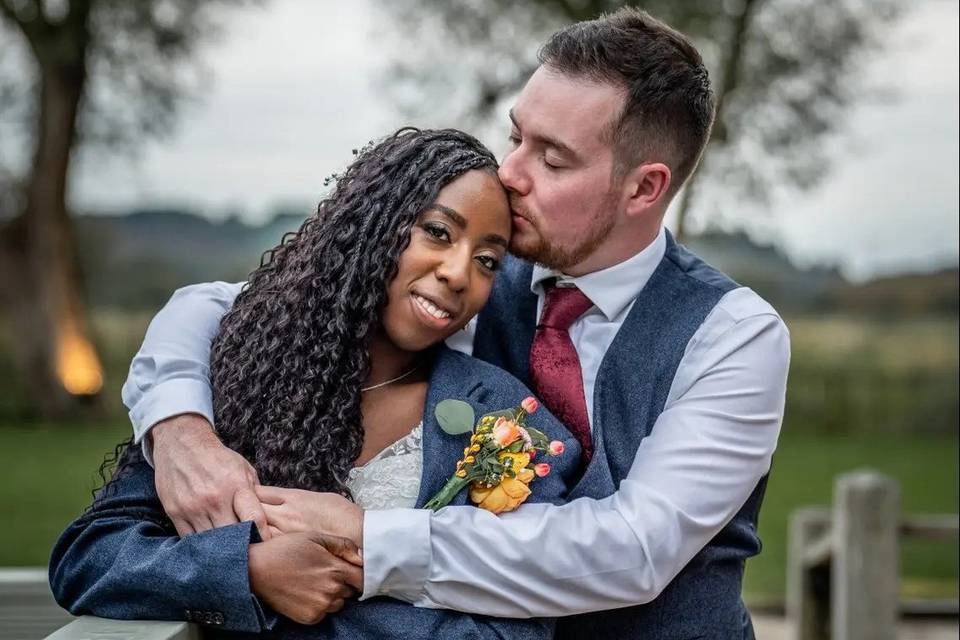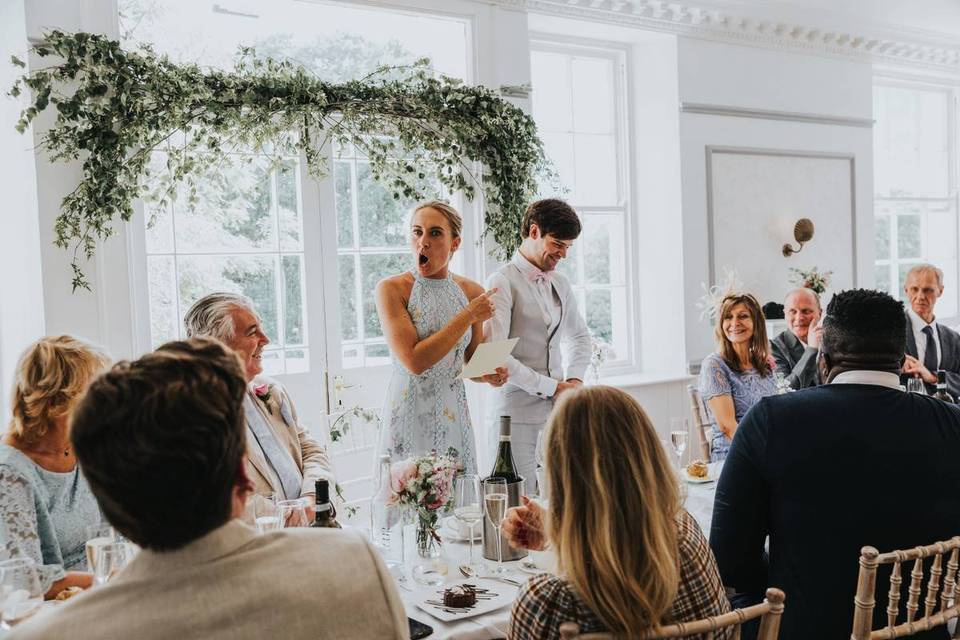The Complete Guide to Changing Your Name After Marriage
Planning to change your name after your wedding? Find out everything you need to know about the legalities and options in our handy guide
We have included third party products to help you navigate and enjoy life’s biggest moments. Purchases made through links on this page may earn us a commission.
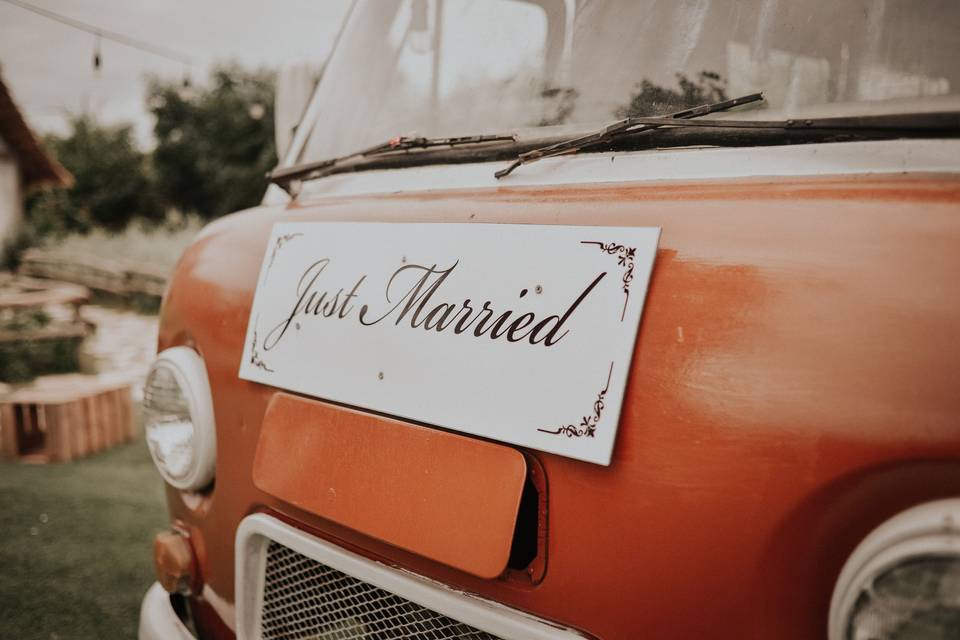

There is a lot to consider when it comes to changing your name after marriage. Of course, it’s a huge life decision and you may feel that it’s one that needs time and consideration. It also requires a lot of thought when it comes to paperwork and notifying people of your changed surname.
If you’ve decided that you’d like to change your name after marriage, one of the tasks on your post-wedding checklist will be figuring out how and when to start the name change process.
Whether you’re taking your partner’s name, sticking with your surname or using a combination of both surnames, there are a few options to consider when it comes to changing your name after your wedding.
So, how do you get your last name changed? We spoke with Cécile Mazuet-Eller, founder and managing director of NameSwitch to find out all there is to know on changing your name after marriage.
From the emotional considerations to the legal practicalities, discover everything you need to know about changing your name after your wedding with our post-marriage name change checklist.
- How to Change Your Name After Getting Married: UK Checklist
- 9 Things to Consider Before Changing Your Name
- The Most Popular Name Changing Options After Marriage
- How Do You Change Your Name After Marriage?
- Who You Need to Notify of a Name Change
- Changing Your Name on Your Passport
Please note: Information is correct as of April 2025. Please check the gov.uk website in case of any changes.
How to Change Your Name After Getting Married: UK Checklist

- Obtain your marriage certificate and certified copies
- Inform relevant government departments such as DVLA and HMRC
- Inform your bank and building societies
- Tell your employer
- Apply for a new passport
- Inform the council
- Tell your landlord or mortgage provider
- Update any insurance policies
- Update utilities and services such as water and electricity
- Inform your GP and dentist
- Tell any club or society memberships
9 Things to Consider Before Changing Your Name
A name change after marriage is a big consideration, so don't feel worried if you want to spend more time thinking it over. Here are some things you need to consider before you make the leap of changing your name.
1. Do I Have to Change My Name After Marriage?
Of course you don’t, it’s totally your choice. You should certainly consider the personal toll that losing your surname can have. As well as the legalities and decision making, the process of changing your name after marriage is more emotional than anything.
While some newlyweds can’t wait to take their partner’s surname, there will be others that are toying with the “do I, don’t I?”. For their partners, it can also be emotional – seeing the person you love distressed or confused about making the decision is difficult – and for some, it can even be hurtful if their partner doesn’t want to take their name.
Many more men in heterosexual relationships are deciding to change their names after marriage too, so it’s worth considering how you both feel.
2. How Long After Your Wedding Can You Change Your Name?
It's not something you have to do straight away. You could wait until you start discussing having children (if that's what you want) so your family can all have the same surname, or until you need a new passport. There’s not a time limit on changing your name, and many choose to keep their family name.
When signing the register after the ceremony, you will have to sign with your family name (also known as your 'maiden name', but that term isn't applicable to everyone) – and not your married name – as this name needs to be on the marriage certificate.
3. Does It Take Away My Independence?
There are plenty of reasons why a woman or man could feel like they are losing some form of identity by changing their name. It could be that you’ve built up a strong and successful career in your surname, are an only child who doesn’t want to lose the family name or just have a strong sense of identity that you fear will disappear.
Changing your name after marriage doesn’t take away any independence you have, nor does it change you as a person, but it’s a really huge decision to make and having any of these feelings is totally normal.
4. How Do I Talk to My Partner About It?
Changing your name is a big deal and if you feel strongly that you don’t want to do it, speak to your partner about it well before the wedding. Communicating openly about the issue, and explaining that the name change is nothing against them but, rather, an important part of who you are, is the best course of action if you want to avoid arguments in the run up to the wedding.
“Name changing customs and practices have really evolved over the last decade and most fundamentally, it's about personal choice!” says Cécile. “It’s important to do what’s right for you, and for you as a couple. Whether you opt to stick, twist, blend, or twist with a twist is totally up to you.”
5. What About LGBTQ+ Couples?
For LGBTQ+ couples getting married or entering into a civil partnership, there is no name changing convention. But couples may still face a dilemma over name changing: in fact, because there is no legal convention, deciding whose surname to share – or whether to change names at all – may be even more contentious.
Blending is also a popular choice for LGBTQ+ couples, whereby the couple getting married create a new, usually hyphenated, name together. Title conventions have expanded too, and there is the option to adopt Mx or Ms after marriage, or stick to their existing titles.
Again, communication is key: talking calmly about your options well before the ceremony is the best way towards reaching a compromise.
6. How Much Does it Cost to Change Your Name After Marriage?
We go into more detail about this below, but for most people the process of changing their name is free and the government will change your records for free, too.
If money is an issue (and you’ve just paid for a wedding so it probably is!), be aware there may be some costs. For example, the Passport Office is currently the only government body to charge the full fee to renew a passport with your new name. The price is £94.50 to do it online, and more if you opt for the paper form, or express services.
A few insurance companies (mainly the lower cost, online only types) may charge an admin fee to process a name change. Also note that if you fail to notify the DVLA immediately of a name change, you can be fined up to £1,000.
7. Be Aware of How Long Things Can Take
You should prepare for a level of delay in some companies' ability to process your name change request, particularly during busy periods. Currently, both the DVLA and the UK Passport Office advise that a change of name on a driving licence or renewal of passport should take around three weeks to complete.
In order to prevent further delay, it may also be worth ordering multiple original copies of your marriage certificate – Cécile recommends 2-4 copies – so that you are able to apply for multiple name changes in parallel. Although not all government bodies require them, many, such as the passport office, DVLA and most financially regulated companies need to see the original copy.
Cécile says that she would “recommend holding off on your NHS record until you update your passport, as any vaccination records need to match the name on your passport for border control purposes. The same principle applies for travel insurance, too.”
8. Check If You Need a Deed Poll
A marriage certificate entitles you to take your partner's surname or vice versa. It also entitles you to double-barrel surnames, with or without a hyphen, in whichever order makes sense to you.
“A deed poll is required if you are seeking to create a new surname or adding or removing a middle name,” explains Cécile.
9. Make Your Employer Aware
You will also need to make your employer aware of any changes you're making to your name, and how you will be corresponding in a professional manner. There may be changes to your email address, payslips and so on, so it's worth telling them quickly.
It’s also worth telling your colleagues if you don’t plan on changing your name, to avoid any awkward, wrongly-addressed cards and gifts!
The Most Popular Name Changing Options After Marriage
Still considering a change of name after marriage? Before you enter into a world of panic, stress and decision making, we have all of your options lined up for you:
Taking Your Partner’s Name
This is the most traditional route that heterosexual couples choose to go down, with the woman more often than not taking the man’s surname. Although it is less common, there are some men who opt to take their new wife’s surname, too.
Double Barrelling
Some couples decide to adopt a double barrelled surname. This works well if you both have fairly short, easy to pronounce surnames like “Sullivan-Jones” or “Smith-Patel”. Longer, more complicated surnames might be less appealing, but if you wish to “double barrel” your name, you can do so.
Changing Your Maiden Name to Your Middle Name
For women who want to keep with tradition but don’t want to completely let go of their family name, an option is to change your maiden name to a middle name, so it is still part of your legal name – and your partner could adopt your maiden name as a middle name, too.
Meshing Surnames
Another idea, growing in popularity, is to combine your surnames – also known as meshing. One famous example is when the journalist and TV presenter Dawn Porter married the actor Chris O’Dowd and changed her name to Dawn O’Porter.
Fusing your surnames is a good choice if you want to make a statement – and a totally fresh start – as a married couple, and it’s seen as a good choice for equality. Do be careful if the new name you create sounds silly or is chosen with tongue in cheek: remember that this is going to be your legal name from now on, and a name you’ll pass on if you have children.
Keeping It Informal
Another, less formal, compromise is to keep using your surname unofficially, not changing your name or email address at work, for example.
You’ll still need to let your HR and accounts departments know that your name has legally changed (particularly if you’ve changed the name on your bank account), but you can let your colleagues know that you’d like to continue using your original surname in a professional capacity. Lots of teachers do this for continuity with their students.
How Do You Change Your Name After Marriage?
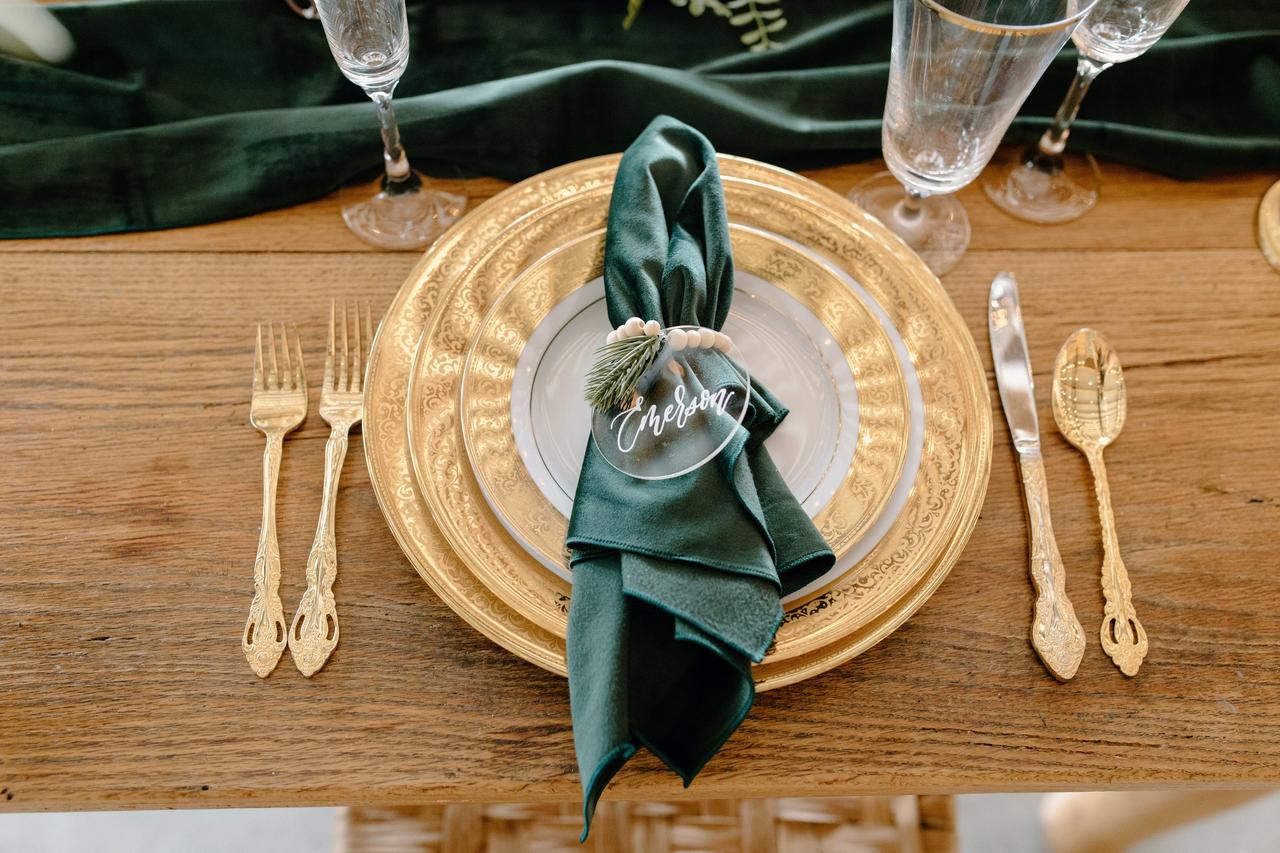
Once you have decided whether or not you want to change your name after you get married, there are a few legal basics you should know:
Taking Your Husband’s Name After Marriage
You don’t need to change your name by deed poll to do this, but you do need to send a copy of your marriage certificate to all relevant authorities, such as the DVLA, and your bank. Check if the organisation you are contacting requires the original marriage certificate or will accept a copy. You will also need to apply for a new passport: if you want to book your honeymoon tickets in your new name, you can apply in advance.
Taking Your Wife’s Name After Marriage
If a man wants to formally change his surname to his wife’s surname, he will just need to send a copy of his marriage certificate to record offices, such as the DVLA and Passport Office. However, non-government organisations such as your bank or building society may not accept your marriage certificate as documentary evidence to change their records. In this case, a deed poll may be required. It’s best to check with your bank or mortgage company what they need.
LGBTQ+ Couples
If an LGBTQ+ couple decides to share one of their surnames, the partner who is changing their name will be able to use their marriage or civil partnership certificate to update their personal records and will not need a deed poll.
Keeping Your Surname
If you decide to keep your surname you don’t have to do anything as none of your personal records or accounts will need to change.
Using a Surname as a Middle Name
If you choose to do this, you must apply to change your name by deed poll using a specialist agency or a solicitor. You’ll need to supply a copy of your marriage certificate to make this change, and you’ll need to have your deed poll certificate before you can apply for a new passport. It’s probably safest to book your honeymoon tickets in your original surname if you’re heading straight off on holiday.
Using a Double Barrelled Name
If a woman or man wants to double-barrel their surname, they will often just need to send copies of the marriage certificate to relevant authorities along with a note stating their new chosen surname, including which order you want the names in and whether it is hyphenated.
However, if the name change is not straightforward (e.g. you want to use your original surname after a divorce), you will need to change your name by deed poll. If you both need to change your name by deed poll, then it’s recommended the man change his before the wedding then his wife can simply use her marriage certificate to apply for a new passport/change her records after the wedding (saving on the expense of two deed polls).
The same applies to an LGBTQ+ couple if one partner changes their name before the wedding/civil partnership. Leave enough time for this process and to order new passports if you’re booking honeymoon flights in your new name.
Meshing Your Names
You can mesh two surnames (e.g. John Smith and Jane Doe become John and Jane Smoe) or create a totally new surname to share. Doing this requires a deed poll and if you want to keep your old surname as a middle name, you can do this at the same time.
Expert Advice from NameSwitch
To help couples totally understand the process of changing your name, we spoke with industry specialists NameSwitch – a company that has compiled a database of hundreds of companies and all of the information needed for each one when changing your name.
Using this service, can save couples an approximate time of 15 hours when changing their names.
Simply visit the website, fill in your details, and tick the boxes of every company that you need to inform about changing your name. NameSwitch then automatically generates every single one of the letters you need to send off and a set of personalised instructions.
It offers both electronic and print packages, depending on whether you want to print the letters yourself.
Who You Need to Notify of a Name Change
- The passport office (see more details below)
- The DVLA (driving licence, vehicle registration)
- HM Revenue and Customs
- Child Benefit
- Local Authority (Council tax and electoral register)
- Land Registry
- Student Loans
- Your employer
- Your bank or building society
- Your mortgage provider
- Your pension providers
- Credit card companies
- Your phone & broadband provider
- Your doctor
- Your dentist
- Your vet
- Your gym
- Your motoring organisations (breakdown cover)
- Utility companies (gas, water, electricity providers)
- Your insurance company (motor, home, travel, pet)
- Loans companies
- Magazine subscriptions
- Store cards & online accounts
- Any clubs or societies you are a member of
Changing Your Name on Your Passport
Do I have to change the name on my passport after marriage?
As with all other documents, companies and providers, you only have to change the name on your passport if you are actively legally changing your name after your wedding. If so, this is certainly one of the most important legal things to do after getting married in the UK.
Can I go on honeymoon with my married name?
If you want to go on your honeymoon with your married name, it is important to remember your tickets have to match your passport. You can change your name on your passport up to three months before your wedding ceremony. Your old passport will then be cancelled.
The new passport is ‘post-dated’ which means it is valid from the date of your ceremony and you can’t use it before the ceremony. Some countries won’t issue visas for post-dated passports so do check with the country’s consulate.
To renew your passport you can either:
- Apply online here.
- Apply using a standard passport application form which you can pick from any Post Office branch.
- You must also send A ‘Post-Date Form 2’ along with your application.
The religious minister or registrar who will conduct the ceremony must sign this, as must you with your current name and signature.
For more information on changing your name, be sure to check out NameSwitch. Or maybe you'd like to consider name blending?


